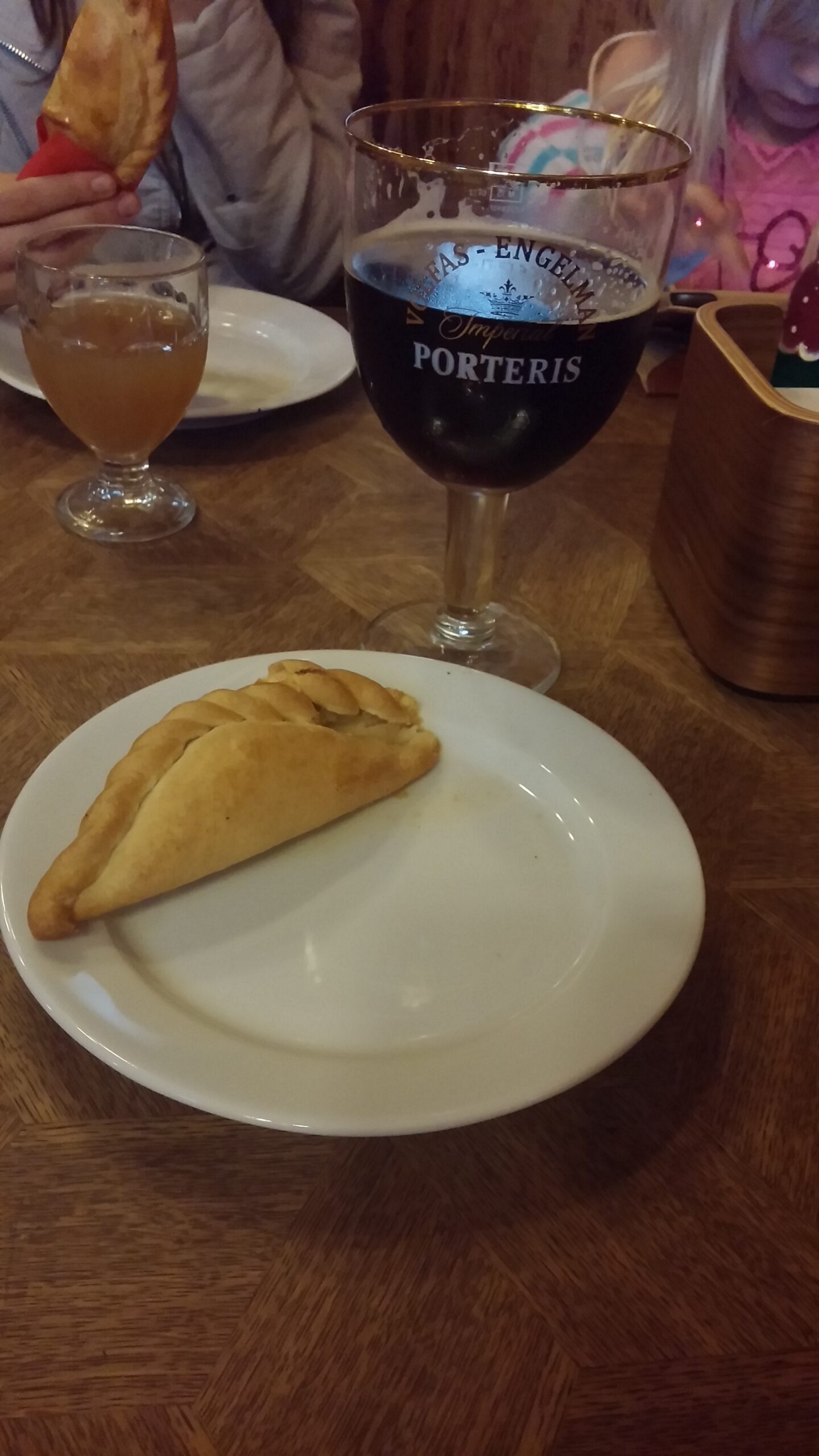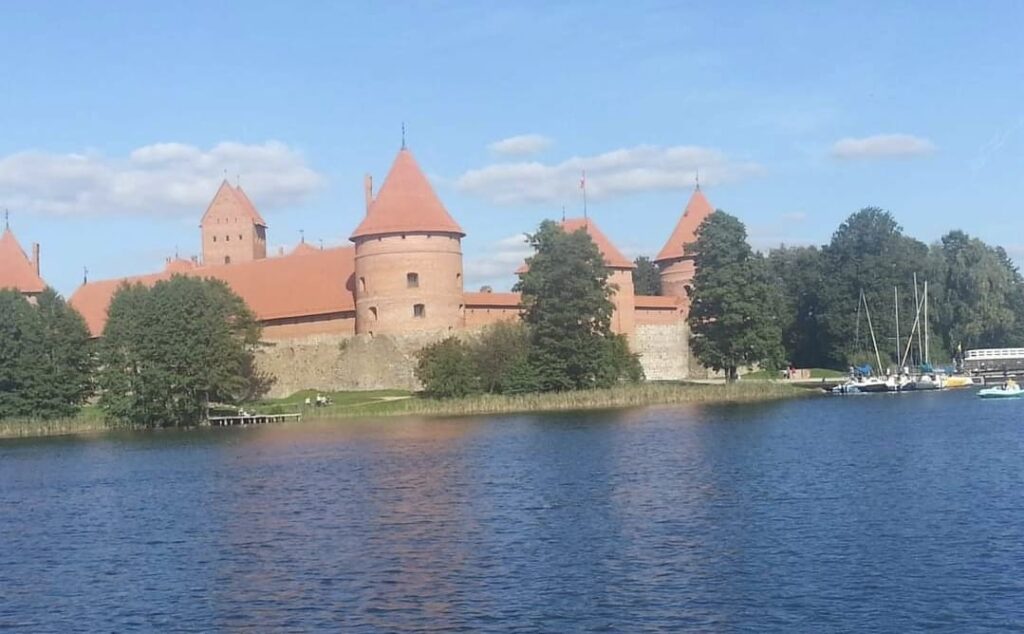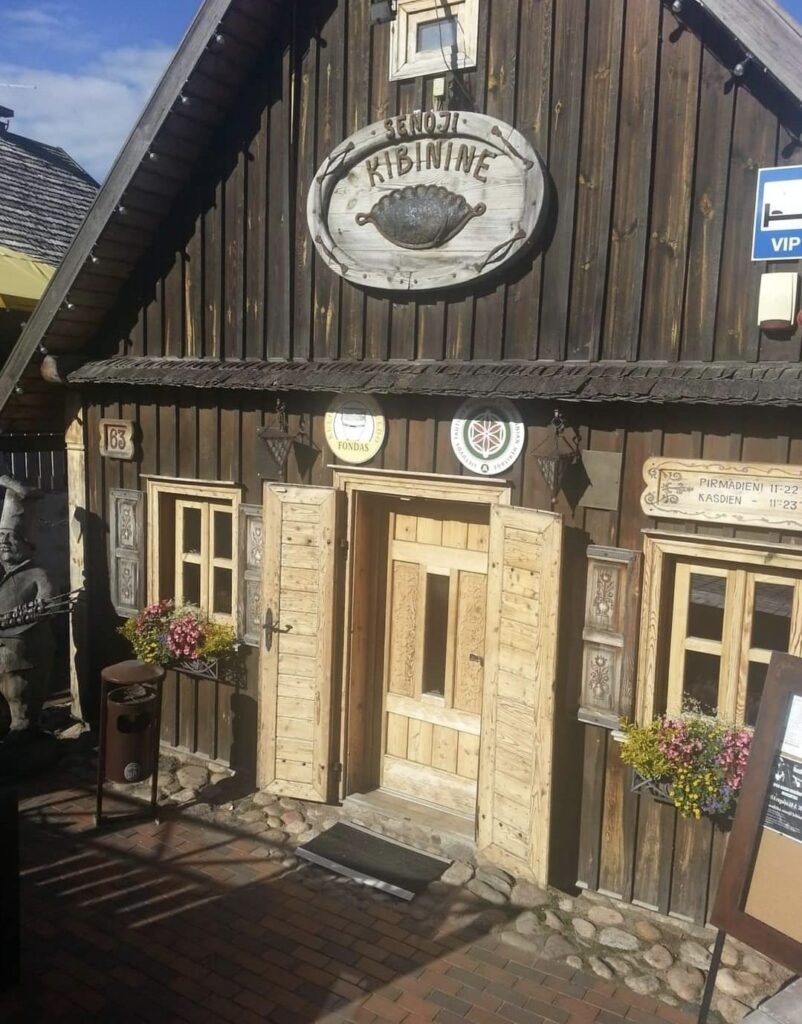Kibinai, a traditional Lithuanian dish, are savory pastries with a rich history and a unique cultural significance. Originating from the Krym Tatar community in Crimea, these delectable treats found their way into Lithuanian cuisine, particularly in the picturesque town of Trakai.
The story of kibinai is a testament to the dynamic nature of culinary traditions. Hailing from the Krym Tatar people, these pastries were introduced to Lithuania by the Krym Tatars who settled in the Trakai region. Over the years, the Lithuanians embraced this dish, infusing it with their own culinary sensibilities and flavors, creating a unique fusion that has become an integral part of Lithuanian gastronomy. The Krym Tatars are an ethnic group with a rich history rooted in the Crimean Peninsula, located on the northern coast of the Black Sea. Their history is marked by a series of migrations, interactions with various cultures, and periods of both independence and subjugation.

The Krym Tatars are descendants of the Turkic-speaking Tatars who settled in the region around the 13th century. They trace their lineage to the Mongol Empire and the Golden Horde, both of which played significant roles in the historical development of the Crimean Peninsula. In the 13th century, the Mongol Empire, under the leadership of Genghis Khan, began a series of conquests that eventually led to the establishment of the Golden Horde, a Mongol khanate that included the Crimean Peninsula. The Tatars, who were part of the Golden Horde, played a pivotal role in the administration and cultural exchange of the region. In the mid-15th century, the Crimean Khanate emerged as an independent state under the leadership of Hacı I Giray. It was recognized as a vassal of the Ottoman Empire, which had become a significant regional power. The Crimean Khanate, with its capital at Bakhchysarai, became a major political and cultural center in the region. In the 14th century, Lithuania, under the rule of Grand Duke Gediminas, began expanding its territory. This expansion eventually brought the Lithuanian Grand Duchy into contact with the Crimean Khanate. In the late 14th and early 15th centuries, Lithuania and the Crimean Khanate entered into diplomatic and trade relations. This interaction led to the migration of Krym Tatars to Lithuania, particularly to the town of Trakai. Trakai, located in present-day Lithuania, became a significant center of Krym Tatar settlement. The Tatars were skilled in various crafts and contributed to the cultural and economic diversity of the region. Their legacy is notably preserved through culinary traditions, particularly the renowned kibinai pastries.
At its heart, a kibinas is a culinary marvel that transcends the boundaries of ordinary pastries. What makes it truly exceptional is the meticulous craftsmanship that goes into its creation. Imagine a pastry that encapsulates a symphony of flavors, a harmonious blend of succulent meats, aromatic onions, and an artful selection of seasonings. This exquisite mixture is lovingly cradled by a dough so carefully crafted that it becomes more than a mere casing; it is the vessel that brings this flavorful concoction to life. As you take your first bite, your senses are immediately greeted by a medley of tastes and textures that dance on your palate. The richness of the meats mingles with the sweet notes of caramelized onions, creating a symphonic balance that is nothing short of extraordinary. The dough, painstakingly prepared to achieve the perfect balance of flakiness and tenderness, cradles this savory masterpiece, offering a textural contrast that elevates the experience to new heights.


Oldest Kibinine is the best place to try this
But a kibinas is not merely a feast for the taste buds; it is a work of art for the eyes as well. Its crescent-shaped form, delicately folded and sealed with culinary expertise, is a visual testament to the care and precision that goes into its creation. The golden-brown exterior hints at the promise of a delectable filling within, inviting you to embark on a culinary journey that is both visually captivating and undeniably appetizing.
To savor a kibinas is to embark on a sensory adventure, a journey through layers of flavor and tradition. It is a testament to the craftsmanship and expertise of those who have honed this culinary art over generations. Each bite is a revelation, a testament to the boundless possibilities of taste and texture that can be achieved through careful preparation and a deep respect for culinary heritage. In every sense, a kibinas is more than a pastry; it is a cultural emblem, a testament to the art of culinary fusion, and an invitation to savor a taste that is truly one-of-a-kind.
While it may take a bit of time and effort, the end result will be a delicious batch of homemade kibinai that you can enjoy:
You’ll Need:
For the Dough: 3 cups all-purpose flour, 1 tsp salt, 1 cup warm water, 1 tbsp vegetable oil
For the Filling: 1 lb ground meat (beef, pork, or a combination), 1 large onion, finely chopped, Salt and pepper to taste, additional seasonings like paprika, cumin, or garlic powder for flavor
1. Prepare the Dough: In a large mixing bowl, combine the flour and salt. Gradually add warm water while mixing until a dough forms. Knead the dough for about 5-7 minutes until it’s smooth and elastic. Coat the dough with vegetable oil, cover it, and let it rest for about 1-2 hours.
2. Prepare the Filling: In a separate bowl, mix together the ground meat, chopped onion, salt, pepper, and any optional seasonings you’d like to add. Ensure that the mixture is well combined.
3. Assemble the Kibinai: Preheat your oven to 350°F (180°C). Roll out the dough on a floured surface and cut it into circles about 5-6 inches in diameter. Place a spoonful of the meat filling onto one half of each dough circle, leaving some space around the edges.
4. Fold and Seal: Fold the dough over the filling to create a half-moon shape. Press the edges together to seal the kibinai.
5. Bake: Place the sealed kibinai on a baking sheet lined with parchment paper. Bake in the preheated oven for about 25-30 minutes, or until they turn golden brown.
6. Serve: Allow the kibinai to cool slightly before serving. They can be enjoyed warm or at room temperature. You can brush the tops of the kibinai with an egg wash before baking to give them a shiny finish.
While crafting kibinai at home can be a rewarding endeavor, there’s an enchantment in those fashioned in the heart of Trakai that simply can’t be replicated. Much like the renowned pastrami sandwiches of New York, kibinai in Trakai hold a special place in Lithuanian culinary tradition. Everywhere you turn in this charming town, you’ll find these crescent-shaped pastries served with pride. Each establishment puts its own unique spin on the classic, vying to outdo the others in flavor and execution. The result? An array of kibinai, each one more tempting and flavorful than the last. So, when your travels bring you to Lithuania, make sure to carve out time for a visit to Trakai. There, amidst the cobbled streets and the historic Trakai Castle, you’ll discover the true essence of kibinai, each bite offering a tantalizing taste of authentic Lithuanian heritage. It’s an experience that transcends the culinary, a journey into the heart of a town that proudly boasts this cherished dish as part of its vibrant cultural tapestry.






